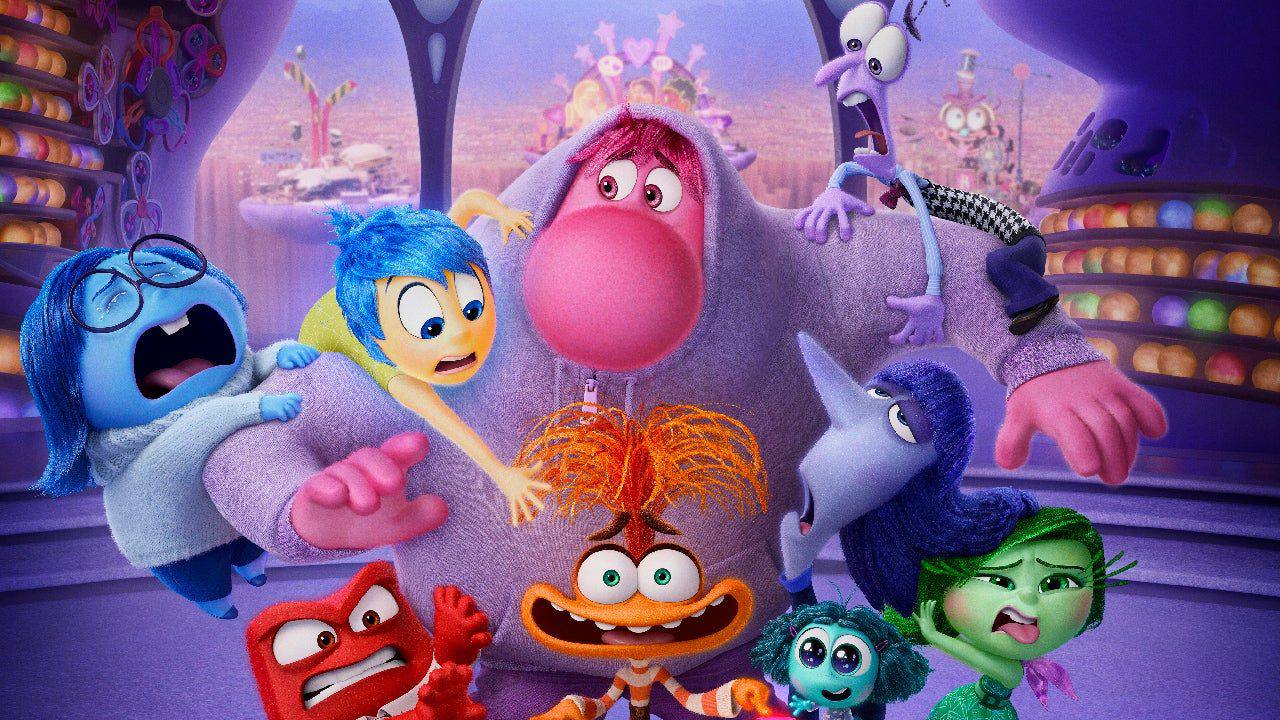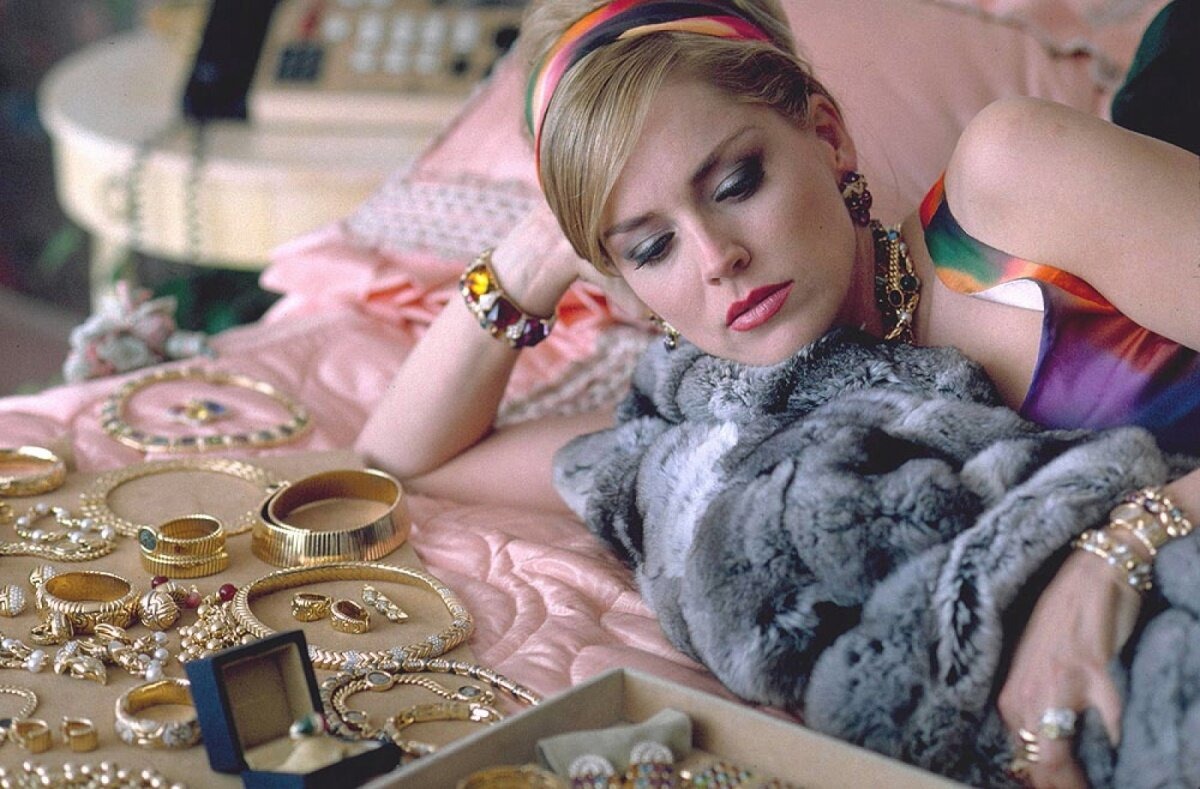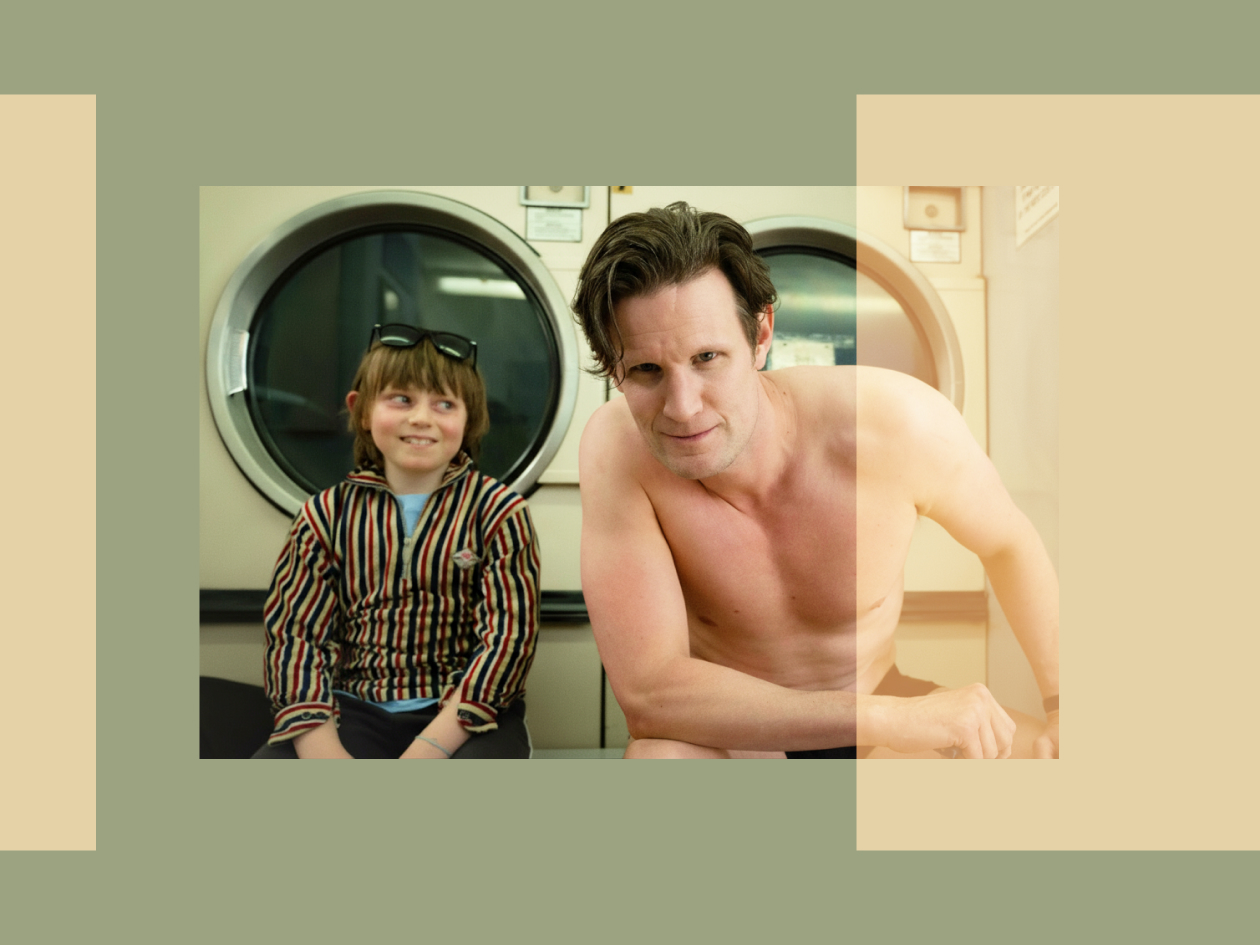“Inside Out 2” became the second highest grossing animated film in history, second only to the second part of “Frozen”. And this is not surprising, because through bright and childishly naive animation, the audience is shown the work of different parts of the brain, through the reaction of the main character to various events in life.
At first, the plot may even seem naive, in the spirit of “snowflake generation”. After all, who would have thought that such a drama would arise in the brain of the hero due to moving to a new place? But in childhood we do not have much experience yet, so any change seems critical to us. And the authors showed this in great detail in the first part. In the sequel, Riley turns 13 and faces new challenges as she grows up.
What happens to us during adolescence? Why are all emotions, even negative ones, necessary for the full development of personality? What happens in our brains when we experience certain experiences and feelings? So how do we understand the end of a cartoon?
Natalya Zhukova, a neuropsychologist-rehabilitation specialist with more than 13 years of experience, founder and rector of the University of Modern Psychology, answered these questions exclusively for The Fashion Vibes.
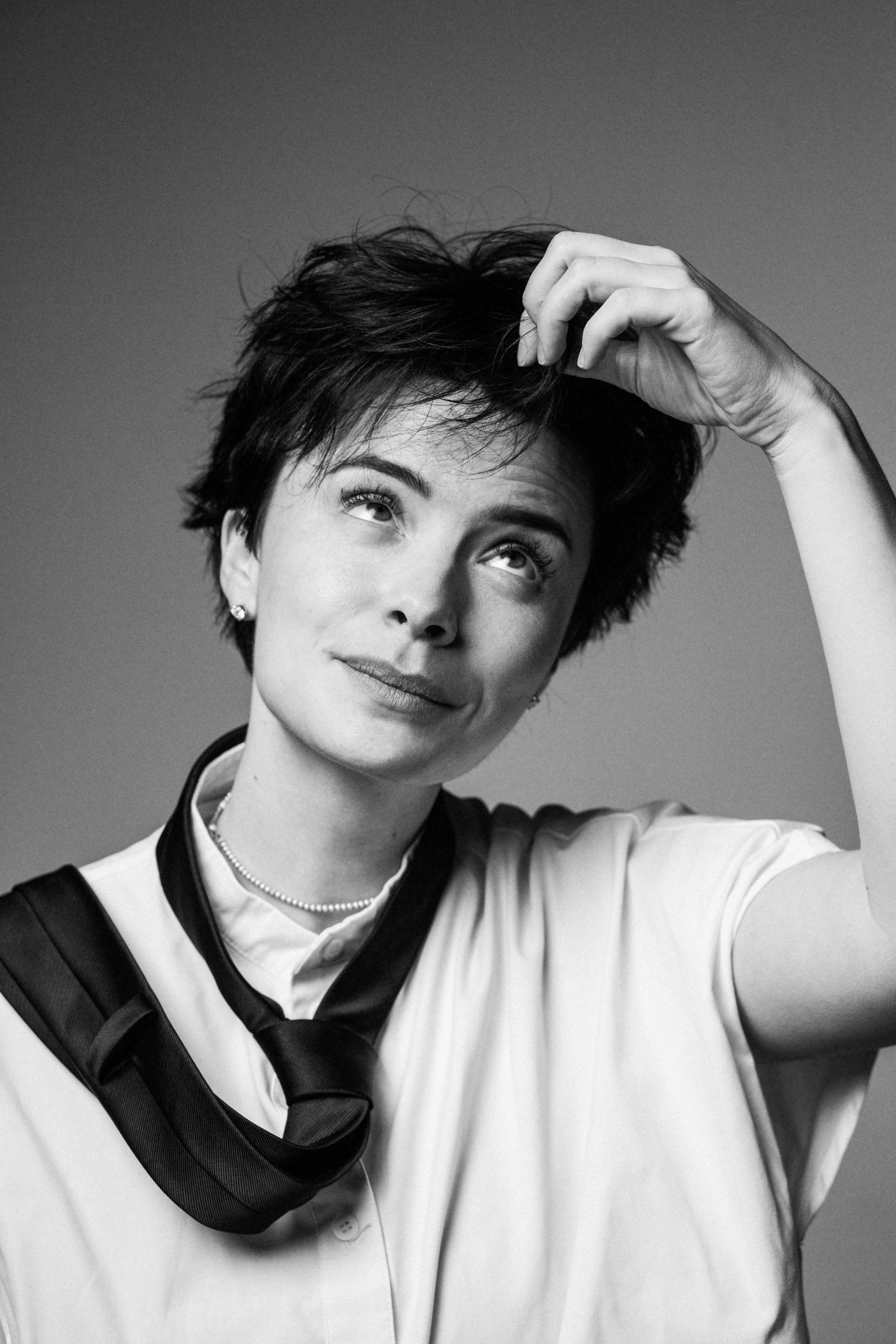
Natalia Zhukova, psychologist
How is the brain’s work shown in the cartoon “Puzzle”?
Our brain is made up of many structures, each with its own unique function. The cartoon Inside Out 2 depicts a model of how the brain works, with young Riley’s behavior being controlled by different emotions. These emotions (Joy, Sadness, Anger, Fear, and Disgust) are not just reactions to events, but are also important elements of emotional intelligence, which plays a key role in personality formation and behavior.
For example, there’s a wonderful scene in the cartoon where Joy and Sadness take Riley’s memory of winning a hockey game to the belief center – where from that memory, along with Riley’s other beliefs, a new belief is formed, like “I am a winner.” From those beliefs, her self-awareness, that is, the kind of person Riley is, is formed.
From a psychological perspective, this is a realistic look at how our beliefs and self-awareness work. And they are formed based on significant events and memories and become fixed in long-term memory. These beliefs then affect our behavior and self-esteem.
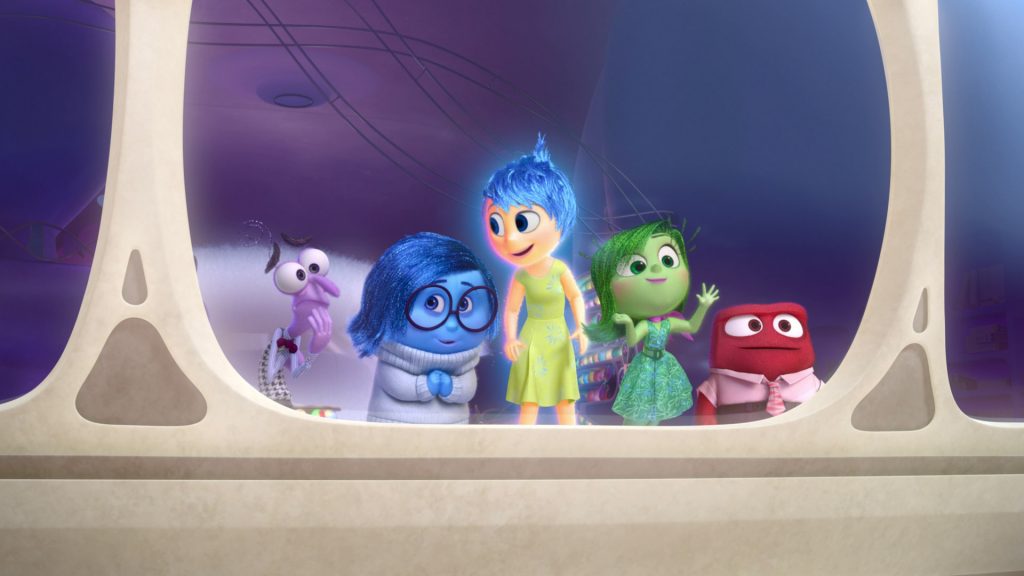
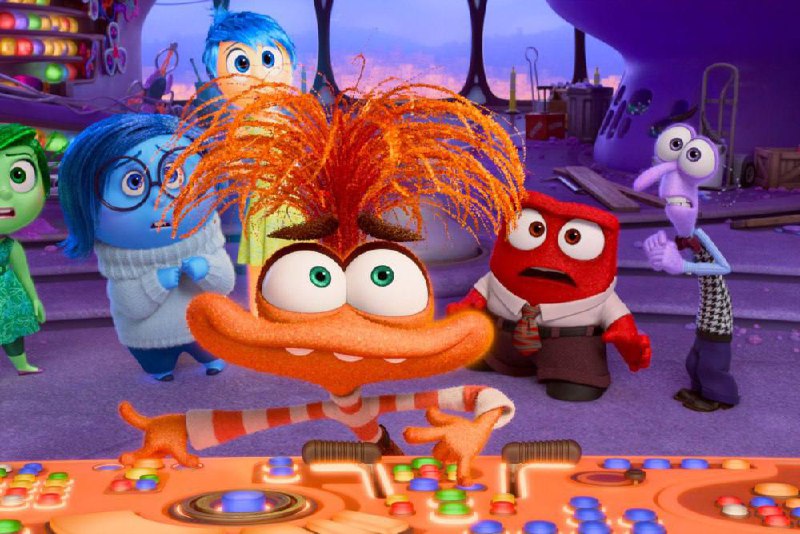
The human brain is constantly processing information, forming and changing beliefs based on new experiences. The hippocampus and prefrontal cortex play an important role in this process. The hippocampus is responsible for storing memories, while the prefrontal cortex plays a role in the formation and maintenance of self-awareness and the management of emotions.
Research shows that emotions play an important role in consolidating memories. For example, events accompanied by strong emotions are better remembered and have a greater impact on our beliefs. So the scene where the memory of victory turns into the belief that “I am a winner” reflects an important aspect of the brain: the influence of emotions in the formation of self-awareness.
We invite you to take our test and find out what emotion you have from the new Puzzle.
Why are all emotions, even the ones we usually avoid, essential to our well-being?
In the first episode of the cartoon, Joy tried to take full control of Riley’s emotional state. Joy wanted the girl to be happy all the time, so she did not give sadness a place at the helm – a perfect symbol of what psychologists call “toxic positivism.”
Toxic positivism is when we forbid ourselves from feeling sad, sad, angry and other natural emotions other than joy. The tendency to “look for the positive in everything” can be detrimental to our inner world. The cartoon perfectly illustrates this when Joy and Sadness fall out of the brain center and Riley, having lost these emotions, finds herself in apathy and unable to cope with various life situations.
What happens next? Riley enters early adolescence and her emotional core becomes increasingly complex. New emotions enter the picture: Anxiety, Jealousy, Shame, and Sadness.
What emotional changes occur during adolescence?
Adolescence is a time of significant change, when a person’s brain and psyche undergo major changes. In the first part of the cartoon, Riley developed healthy attachments and values, but the transition and adjustment to adolescence had a profound effect on her emotional state. The transition period brings about new emotions and difficulties in managing them.
Teenagers between the ages of 11 and 14 often experience mood swings and irritability. In the cartoon, this is shown in a humorous scene where Anger, Sadness and Disgust barely touch the control panel, but this causes a real storm of emotions in Riley. This is a very important process – interestingly, general emotional orientation and emotional intelligence – the ability to distinguish and manage one’s own emotions – are formed during adolescence.
The first significant revaluation of values also occurs at this age. At the very beginning of the cartoon, Riley’s values are presented as “islands”, and the island of friendship is much larger and brighter than the island of family. This shows exactly how our values change as we grow older. Indeed, during adolescence, the most important thing for us is the approval of our friends and classmates, and the opinions of our parents become less and less important.
This “separation” of the child from the parent is an absolutely healthy and natural part of the formation of autonomy in a maturing personality. The teenager learns independence and independent socialization, sometimes this is expressed in excesses, popularly called “teenage rebellion.”
All four new emotions – Anxiety, Shame, Sadness, and Jealousy – emerge at a training camp when Riley meets the captain of the hockey team she dreams of joining. Joy and Anxiety immediately clash: Joy argues that the training camp weekend should be reserved for her old friends, while Anxiety argues that this weekend she can make friends with high school girls and lay the foundation for her future.
Anxiety immediately begins to predict what would happen if Riley didn’t make friends with older girls, each creating a worse-case scenario. We all know that feeling when we’re nervous and start replaying unpleasant scenarios in our minds. This is called catastrophizing.
Catastrophizing is a cognitive distortion in which a person tends to anticipate and experience the worst possible outcomes of a situation. This process can be both beneficial and harmful. On the one hand, catastrophizing can motivate us to prepare for and prevent possible negative events, increasing our sense of responsibility and alertness. On the other hand, excessive catastrophizing can lead to increased stress levels, anxiety disorders, and avoidance of difficult (and important) life situations.
And so, in the blink of an eye, Anxiety takes complete control of the brain center and Joy, Anger, Disgust, Sadness and Fear become repressed emotions locked away in Riley’s secret vault.
What is the function of each emotion in personality development?
Joy
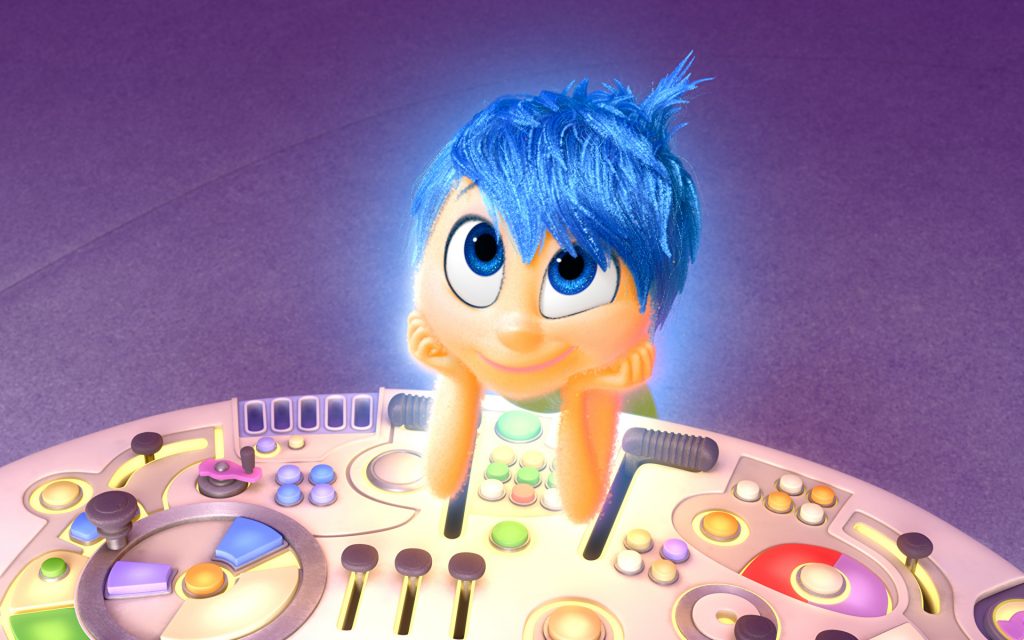
Joy remains the most important emotion that keeps Riley happy at all times. It represents positive thinking and optimism, but the sequel shows that the constant pursuit of happiness can sometimes overwhelm other important emotions needed to fully experience life.
In real life, joy helps people form and strengthen social connections, supports them in difficult times, and promotes a sense of fulfillment. People who experience joy tend to be more optimistic and energetic, which makes them attractive to others and enjoyable to be around. However, excessive pursuit of happiness can also suppress other important emotions, which can disrupt emotional balance.
Anger
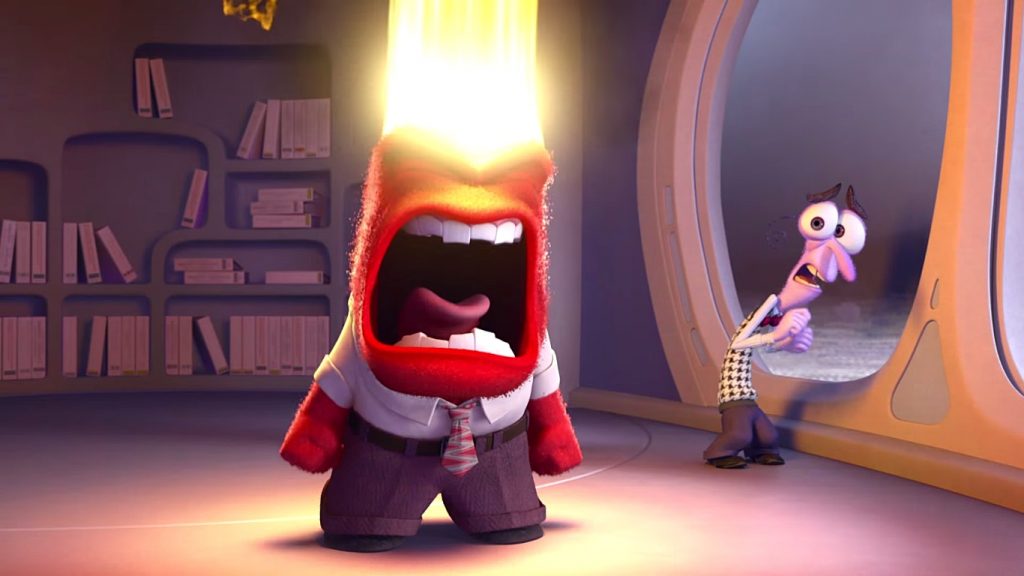
In the cartoon, anger is presented as a fiery and irascible emotion that reacts to injustice. In real life, anger protects our personal boundaries and helps us defend our interests. Expressing anger constructively helps resolve conflicts, but repressed anger can build up, destroy relationships, and cause a variety of problems.
Sadness
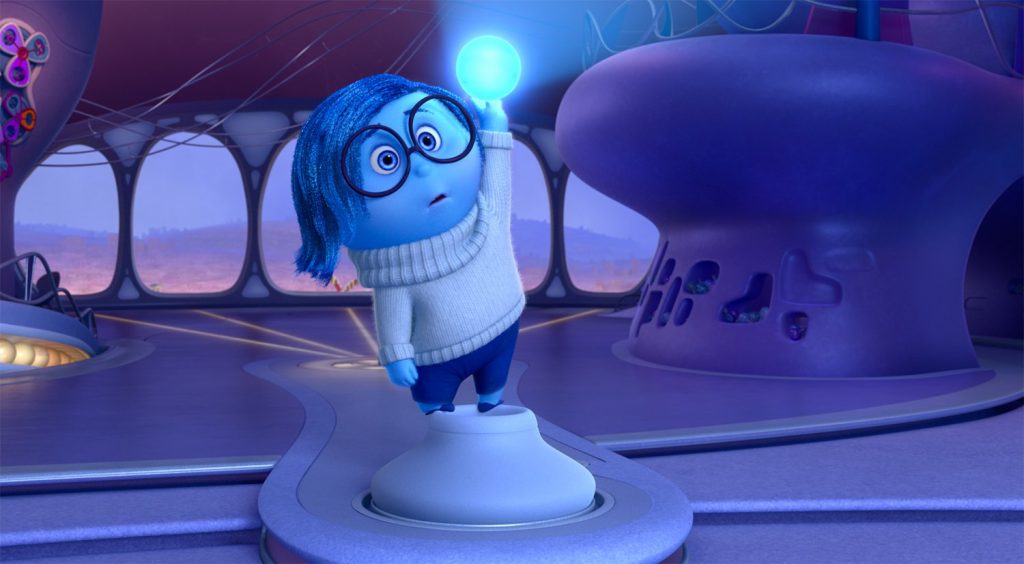
Grief plays an important role in the process of understanding and accepting losses and failures. It helps Riley cope with difficult moments by allowing her to express her feelings and seek support from others.
In relationships, sadness can foster deep emotional connection and understanding; being able to share your grief and receive support from loved ones can help strengthen emotional bonds. Ignoring or suppressing sadness can lead to burnout and feelings of isolation.
Fear
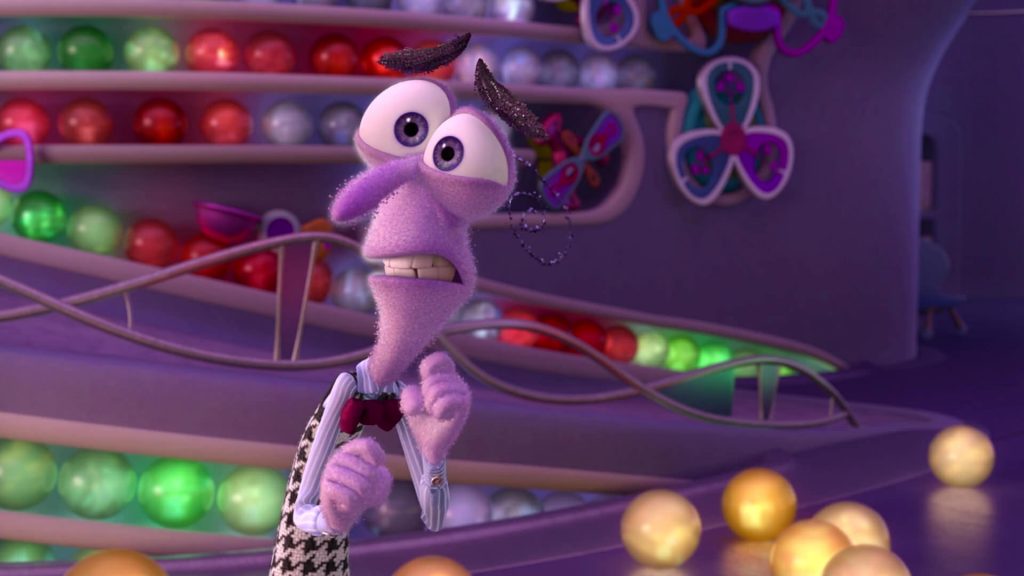
In cartoons, fear is a cautious and anxious emotion that is always ready for danger. In real life, fear protects us by encouraging us to be cautious and avoid risks. It helps us stay alert and prepared, increasing our chances of survival.
Disgust
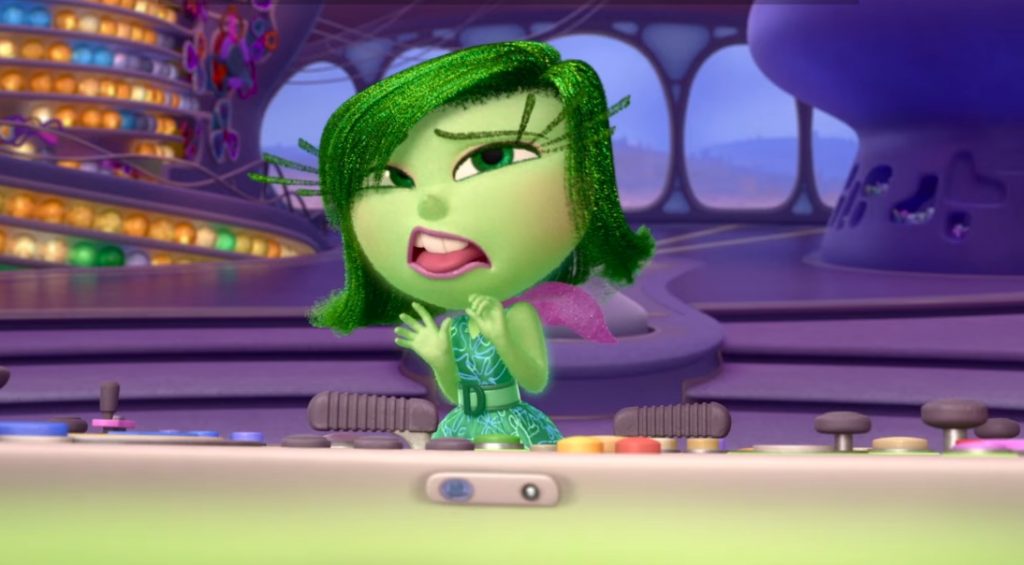
Disgust in a cartoon is a categorical emotion that responds to unpleasant stimuli. In real life, disgust protects us from harmful substances and toxic relationships. Its function is to help us set healthy boundaries and avoid potentially dangerous situations.
Anxiety
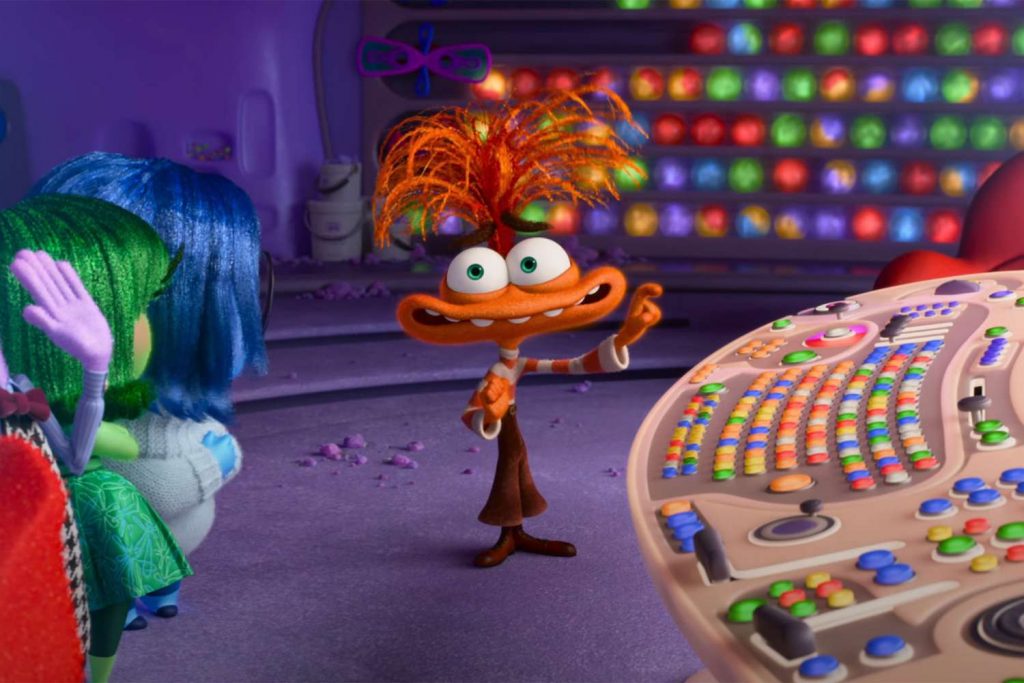
Anxiety, a new emotion in the sequel, reflects the growing fears and insecurities that characterize adolescence. Anxiety helps Riley anticipate and prepare for potential challenges, but it can also lead to extreme isolation and fear of failure.
In real life, excessive anxiety impairs decision-making and causes unnecessary worry, but it also helps us avoid real dangers and pay more attention to details.
Envy
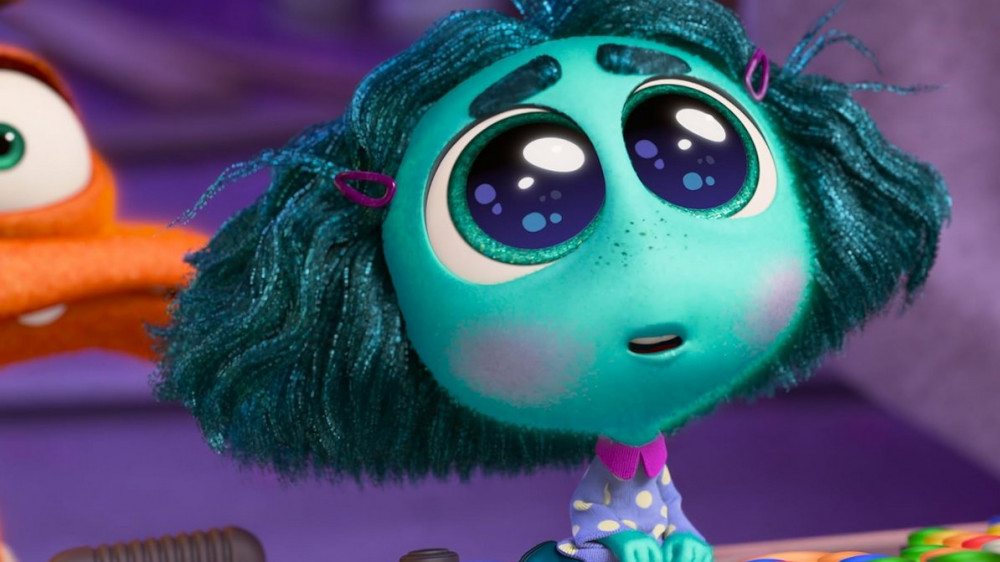
Jealousy motivates Riley to achieve her goals by pushing her to strive for what others have. But it’s important to remember that excessive jealousy can destroy relationships by inciting competition. Turning jealousy into motivation for personal growth can help you improve yourself without damaging your connections with others.
Shame
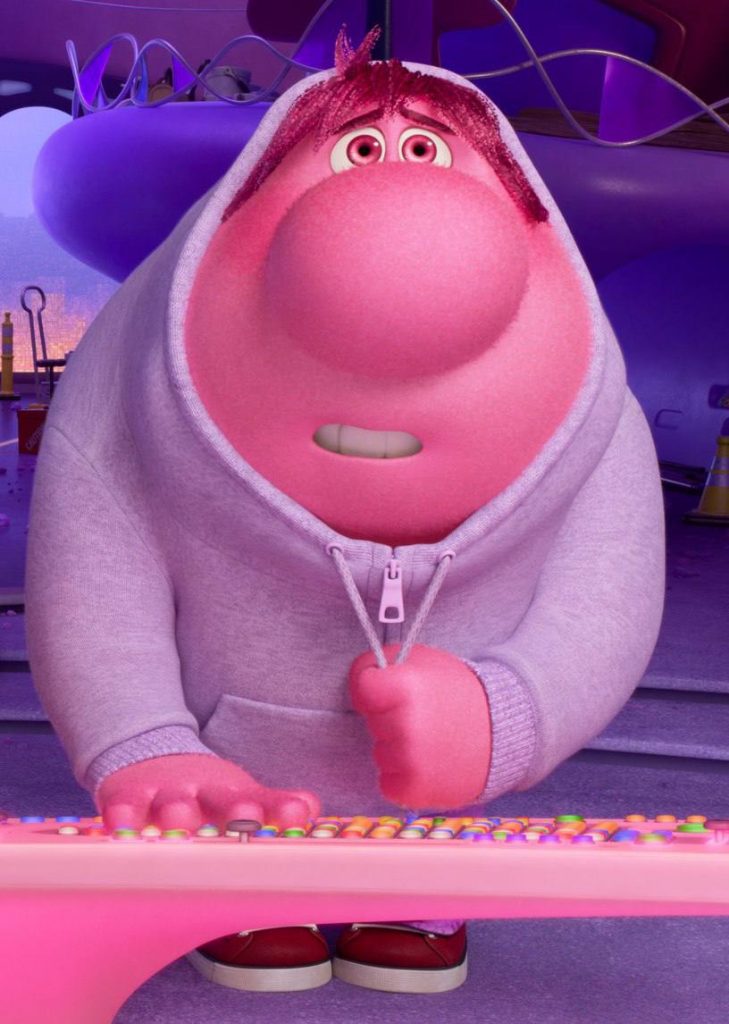
Shame helps Riley understand social norms and avoid behaviors that are socially frowned upon. This is important for her to become self-aware and fit in with the team.
In relationships, shame can lead to behavior modification and avoidance of actions that could harm others, but excessive shame suppresses personal growth and causes insecurity.
Boredom
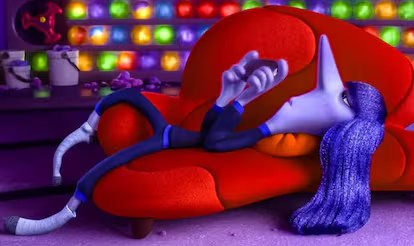
Boredom encourages us to break away from routine and seek out new hobbies and interests. It pushes us to develop ourselves and seek new goals, which are important for personal and professional development. In relationships, boredom can signal a need for variety and new experiences, encouraging renewal and strengthening of bonds.
How to understand the ending of the cartoon?
The main character, Riley, had five emotions that completely formed her personality until a certain age. Joy was in the foreground, hiding the bad memories and leaving only the good memories in memory.
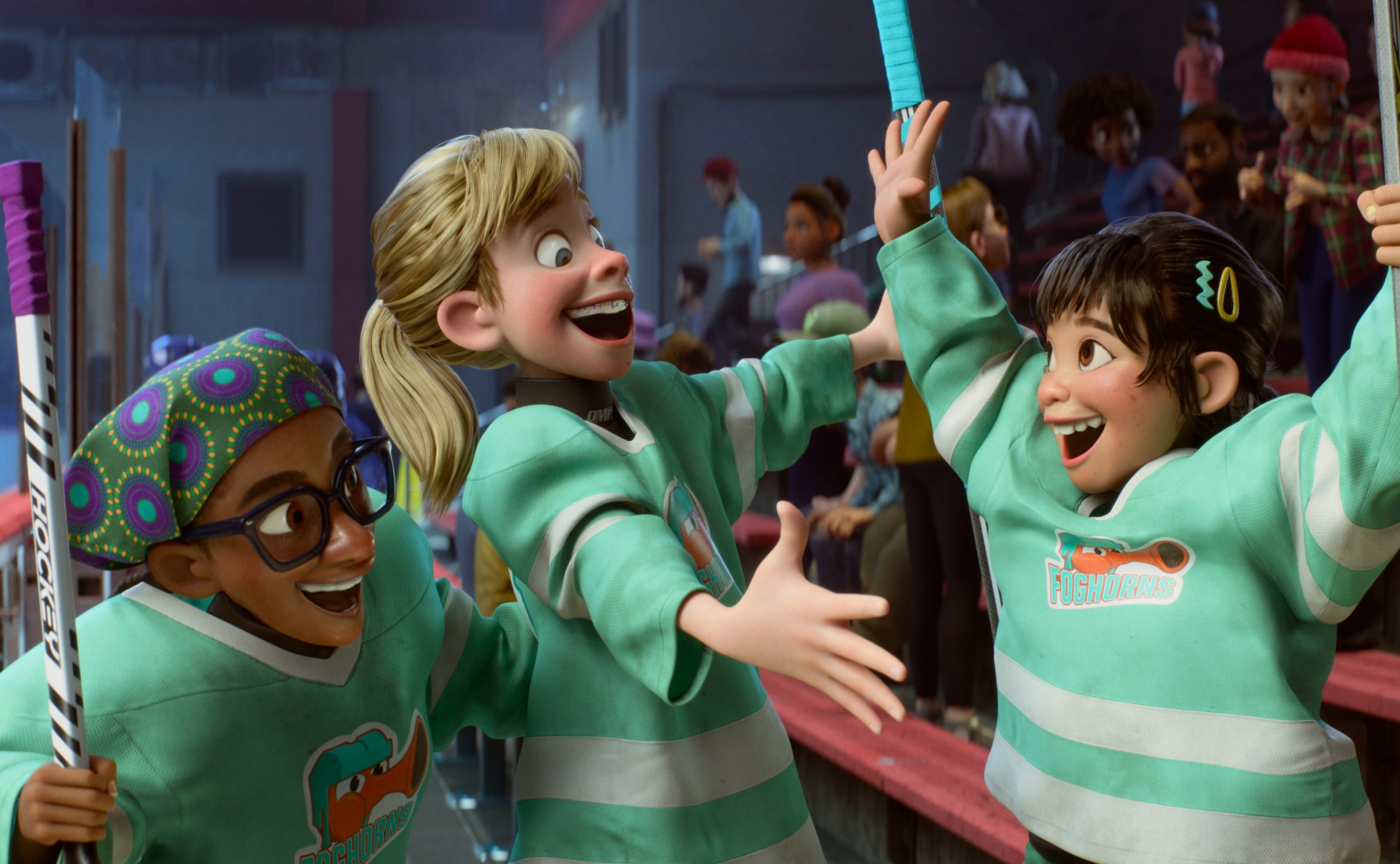
This shaped her image as a good person. However, the teenage crisis brought new emotions and anxiety took over, spurring Riley to new actions and achievements. She wanted Riley to achieve her dreams as soon as possible, but this led to low expectations of herself and panic attacks.
Only when all emotions were reconciled and even negative memories returned to consciousness did Riley achieve harmony and balance. She realized that being human meant not only being good, but also accepting all aspects of yourself, including uncomfortable and negative emotions. This balance made her not just a good example of a human being, but a real and complete person.
Source: People Talk
Errol Villanueva is an author and lifestyle journalist who writes for The Fashion Vibes. With a passion for exploring the latest trends in fashion, food, travel, and wellness, Errol’s articles are a must-read for anyone interested in living a stylish and fulfilling life.

